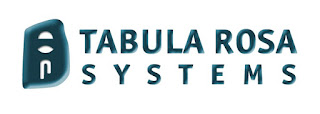Buy the books at
www.amazon.com/author/paulbabicki
====================================================



|
|
|
|
|
|
Updated October 08, 2018
Purists may tell you that many of the words
in the list below aren't "really" words at all, but that's misleading
at best. A few of the words are simply misspellings, and the rest are informal
expressions or slang phrases that frequently appear in everyday speech (or vernacular).
Nevertheless, according to the
conventions of Standard English, all 10 of the following
words should be avoided in reports, essays, research papers, and all other
types of formal writing.
- alot
Alot (one word) is a common misspelling of a lot (two
words). "[W]e all may write alot one day," says The
American Heritage Guide to Contemporary Usage (2005), but for now
"keep in mind that alot is still considered an error in
print."
- and etc.
Because the abbreviation etc. (from the Latin et cetera)
means "and so on," and etc. is redundant. In any case,
avoid using etc. in your essays: often it gives the impression that
you simply can't think of anything else to add to a list.
- anywheres
Huck Finn can get away with saying, "There warn't a sound
anywheres," but on formal occasions drop the terminal s. If anywheres
appears anywhere in your dictionary, it's probably labeled "nonstandard" or "dialectal."
- could of
Don't confuse this nonstandard form with the contraction could've. Could
of (along with should of and would of) can and should be
replaced by could have (and should have and would have).
As for coulda, shoulda, woulda, avoid dwelling on them—both in
writing and in life.
- hisself
This alternative form of the reflexive pronoun himself is commonly
heard in certain dialects, but in formal writing steer
clear of hisself (and theirself as well—though both were
regarded as good usage in Middle and Early-Modern
English).
furtherest
The comparative form of far is farther
or further. The superlative form is farthest
or furthest. Nothing's gained by combining the two
forms.
- irregardless
This double negative (ir- at the
beginning and -less at the end) may not deserve Bryan Garner's
label of "semiliterate . . . barbarism," but he's probably
right that in print it "should have been stamped out long ago" (Garner's
Modern American Usage, 2009). Use regardless instead.
- its'
Its is a possessive pronoun (like his or
her). It's is a contraction of it is or it has.
That leaves nothing for its' to do—so toss it.
- let's us
Let's us means "let us us." To avoid the repetition,
write lets ("She lets us play
in her yard") or let's ("Let's play in her yard") or
let us ("Let us pray").
- nohow
If you have the know-how to write, you don't need to be told to avoid nohow.
Instead use in no way or not at all.
- furtherest
The comparative form of far is farther
or further. The superlative form is farthest
or furthest. Nothing's gained by combining the two
forms.
- irregardless
This double negative (ir- at the
beginning and -less at the end) may not deserve Bryan Garner's
label of "semiliterate . . . barbarism," but he's probably
right that in print it "should have been stamped out long ago" (Garner's
Modern American Usage, 2009). Use regardless instead.
- its'
Its is a possessive pronoun (like his or
her). It's is a contraction of it is or it has.
That leaves nothing for its' to do—so toss it.
- let's us
Let's us means "let us us." To avoid the repetition,
write lets ("She lets us play
in her yard") or let's ("Let's play in her yard") or
let us ("Let us pray").
- nohow
If you have the know-how to write, you don't need to be told to avoid nohow.
Instead use in no way or not at all.
|
|
===============================================================
In addition to this blog, Netiquette IQ
has a website with great
assets which are being added to on a regular basis. I have authored the
premiere book on Netiquette, “Netiquette IQ - A Comprehensive Guide to
Improve,
Enhance and Add Power to Your Email". My new book, “You’re Hired! Super
Charge
Your Email Skills in 60 Minutes. . . And Get That Job!” has just been
published and will be followed by a trilogy of books on Netiquette for
young people. You can view my
profile, reviews of the book and content excerpts at:
www.amazon.com/author/paulbabicki
Anyone who would like to review the book and have it posted on my blog or website, please contact me paul@netiquetteiq.com.
In addition to this blog, I maintain a radio show on BlogtalkRadio and an online newsletter via paper.li.I have established Netiquette discussion groups with Linkedin and Yahoo. I am also a
member of the International Business Etiquette and Protocol Group and
Minding Manners among others. I regularly consult for the Gerson Lehrman
Group, a worldwide network of subject matter experts and I have been
contributing to the blogs Everything Email and emailmonday . My work has appeared in numerous publications and I have presented to groups such as The Breakfast Club of NJ and PSG of Mercer County, NJ.
Additionally, I am the president of Tabula Rosa Systems,
a “best of breed” reseller of products for communications, email,
network management software, security products and professional
services. Also, I am the president of Netiquette IQ. We are currently developing an email IQ rating system, Netiquette IQ, which promotes the fundamentals outlined in my book.







